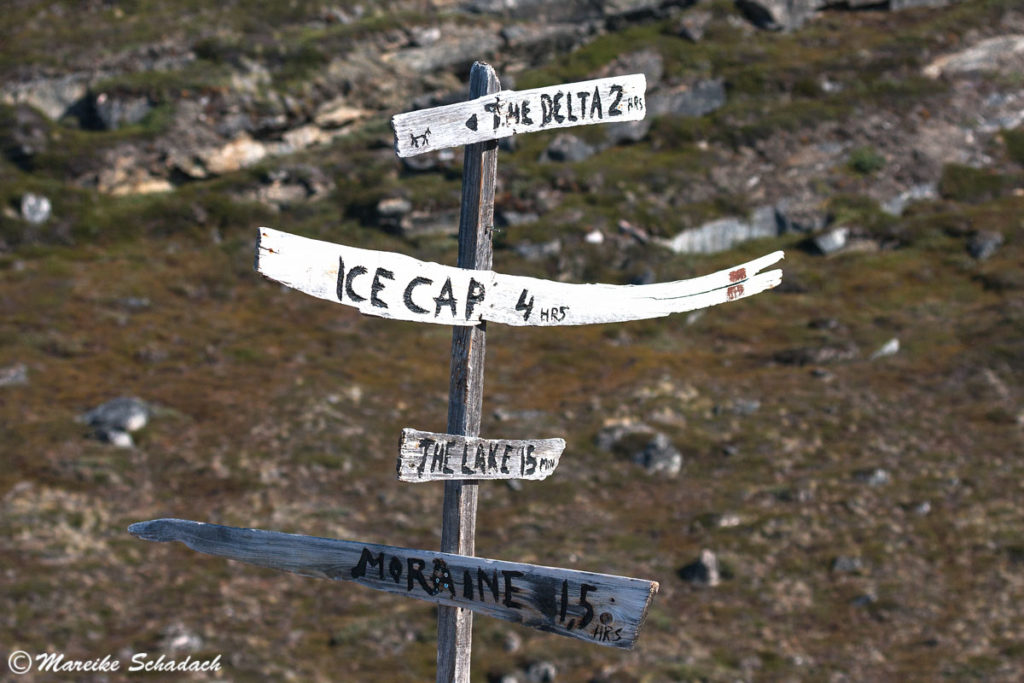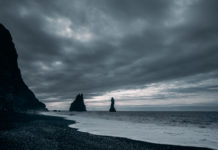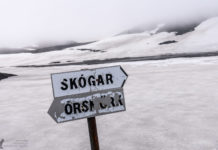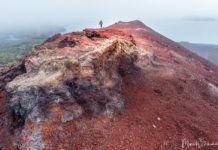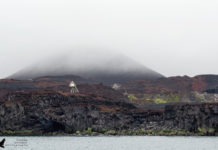Iceland - the island of fire and ice. Besides volcanoes there are glaciers and there are not only lava tunnels but also ice caves. I have seen photos of ice caves and was immediately fascinated by their beauty - the shiny ice, sometimes transparent, white, blue or black. A transient beauty that only lasts in the here and now. And how much this is true, I was soon able to experience for myself. Here I tell you about my tour to the Katla Ice Cave in Iceland, the entrance to a magical fairy tale world.
Unassigned, unpaid advertising. The article contains affiliate links.
How are Ice Caves formed?
Transient Beauties of Ice
The Katla Volcano and the Katla Eruptions
Visit of the Katla Ice Cave at the Glacier Kötlujökull
Inside the Katla Ice Cave - Entrance to a Fairytale World
Conclusion about my Tour to the Katla Ice Cave in the South of Iceland
What Equipment do I need to bring for the Katla Ice Cave?
Season for Ice Caves in Iceland and Safety
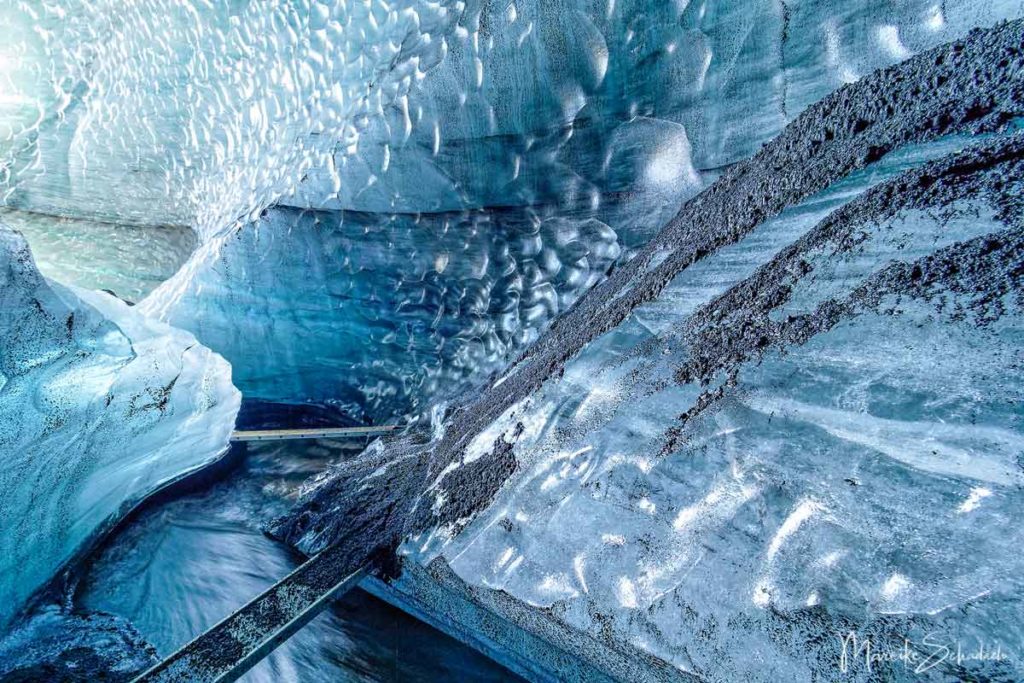
How are Ice Caves formed?
Ice caves - or more precisely, glacial caves - are formed by meltwater. Summer temperatures or geothermal heat cause the glacier's ice to melt. The meltwater then makes its way through crevasses inside the glacier, melting more ice. Trickles, streams, puddles or even lakes are formed. As the glaciers move, the streams and lakes within a glacier change constantly. This can suddenly result in a run-off and all the water disappears. What remains is an empty glacial cave. Each of them is unique and looks different.
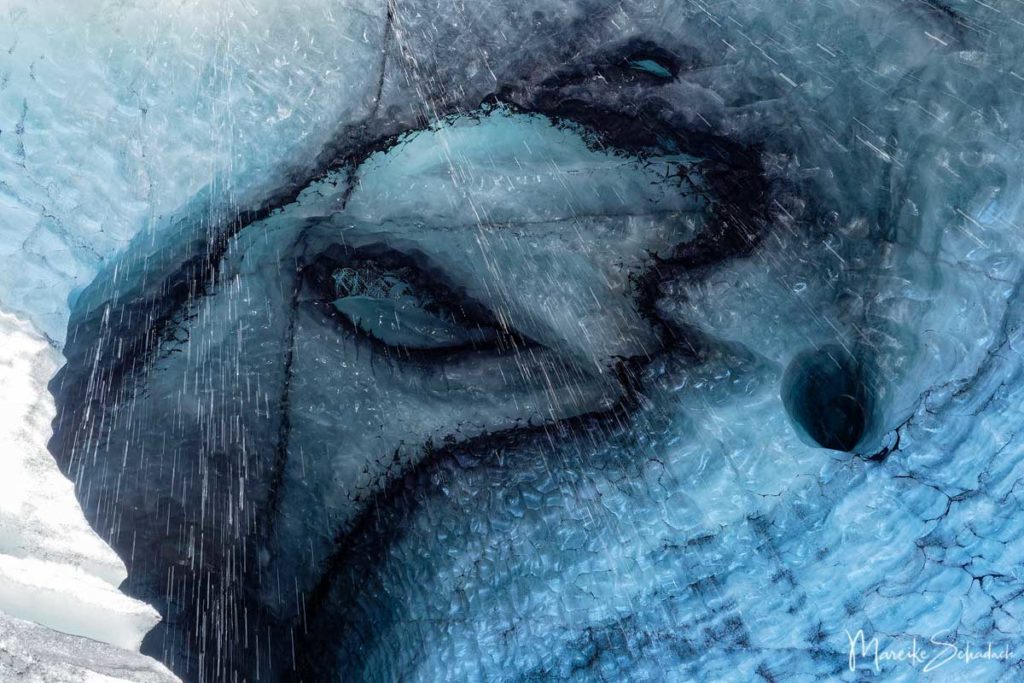
Transient Beauties of Ice
The ice formations of the cave are in constant change, their beauty is ephemeral. Thus an ice cave can thaw, become unstable and even collapse in spring and summer. At other places new ice caves develop. The frost of winter makes them harden again. Most ice caves are therefore only accessible in winter. At Katla Volcano there is the only ice cave that is accessible all year round. So I was very surprised when I learned in the morning of the tour that Iceland's famous Katla ice cave collapsed a few days ago. For six years it has fascinated many visitors with its beauty. But the unusually warm weather in July 2020 has also melted her ice.
But our tour operator already had plan B ready. Not far from the collapsed Katla ice cave there is another cave. It was explored and secured in the days before, ropes were attached, steps were made and boards were laid over the glacial stream inside the cave. It was a bit smaller and narrower, but for me it was the most beautiful ice cave in the world - the first one I visited and therefore especially impressive.
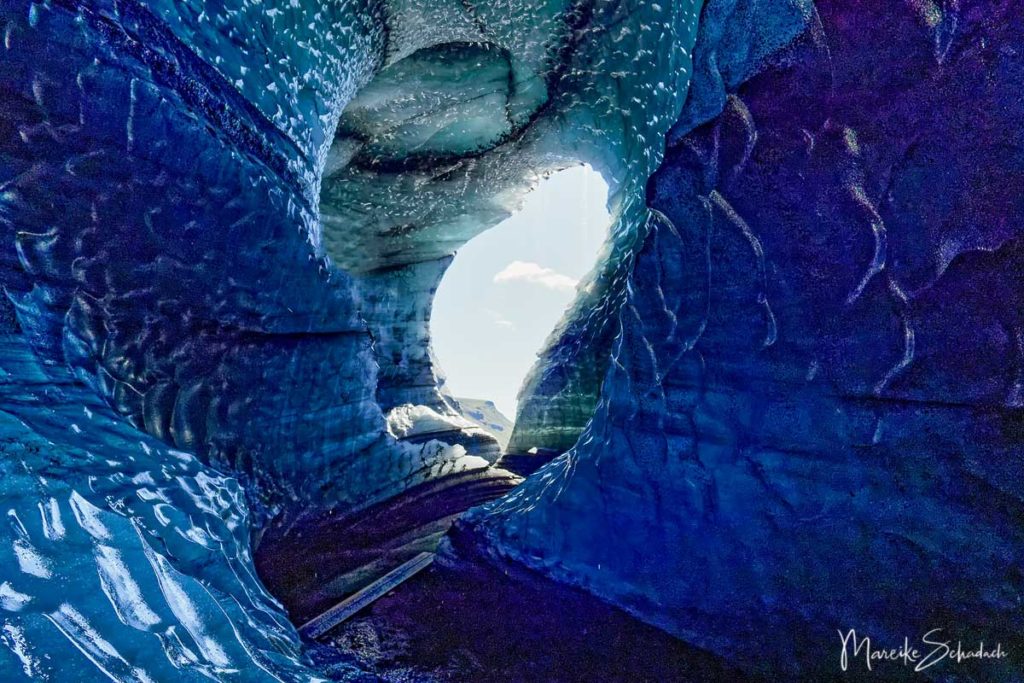
The Katla Volcano and the Katla Eruptions
Katla volcano is located in the south of Iceland, hidden under the fourth largest glacier on the island - Mýrdalsjökull. Katla has erupted about twenty times in the last 1,000 years and is one of the most active volcanoes in the country. The last major eruption was in 1918. The magma chamber of the Katla is located at a depth of 2 to 3 kilometres and is said to have a capacity of 10 to 12 cubic kilometres.
If a volcano lies under a glacier, then so-called glacier runs are formed during an eruption. Hot magma melts the glacier ice and steam explosions occur. The glacier runs transport gravel and ash towards the sea, the beach becomes wider. At the time of the settlement, the beach is said to have been about 5 kilometres further inland. Wow, what forces of nature!

The Katla eruptions are among the most explosive in Iceland. For this reason the volcano is monitored especially intensively. Not only earth movements are measured, but rivers are also examined for changes in mineral content, gas content and electrical conductivity.
Visit of the Katla Ice Cave at the Glacier Kötlujökull
The starting point for the tour to the Katla Ice Cave in the south of Iceland is the parking lot behind the outdoor shop in Vík. The super jeep waiting for me here is hard to miss. It is a former airport bus, which was rebuilt for the tours. The 36inch tyres leave no doubt that the vehicle could take us to any destination. By the way, it is also used in winter, but then with even bigger tyres.

As soon as we have left the ring road in the direction of Katla, we pass through a rugged moonscape of pitch-black sand, stones and green moss. Far in the distance I can already see the ice cap of Myrdalsjokull.

Our driver adjusts the air pressure in the tyres again and again, so the tyres have a better grip: less air when it gets sandy and more air when the road is rocky. With such a super jeep, the ride on the track becomes a pleasant swing. After about 40 minutes of driving we reach a small parking lot. Around us a spectacular scenery opens up: black sand, behind it the glacier and a glacier river whose arms dig through the sand.

Everyone gets crampons and a helmet. Then we continue on foot to the black glacier Kötlujökull, a part of the Myrdalsjokull. We walk through sand, cross several creeks on previously laid out boards and stepping stones. As soon as we hit the ice, we put our crampons over our shoes. I would not have recognized the ice at all, because it is hidden under a black layer of sand. After about ten minutes we are already at the entrance to the glacier cave and put on our helmets. A safety briefing follows and we are divided into three smaller groups - the new cave is simply a bit tighter than the old one. After our guide has checked the cave once more for safety, we start. And we dive into a world for which it is difficult to find words. I have never seen anything comparable. It looks like the entrance to a fairy tale world.

Guided Tours in Iceland
You don't feel like wandering around on your own and would rather join a guided tour in Iceland? Nothing could be easier. If you book an excursion via the following affiliate links, you will support Wanderlust Motifs with a small commission. The tour will not be more expensive for you. Merci!
Inside the Katla Ice Cave - Entrance to a Fairytale World
The ice cave is narrow and in its middle a stream flows in a number of curves. We can only walk along the small edges and take care not to slip. The guides have previously cut steps into the ice and attached ropes to grab on. We have to cross the creek several times. Narrow planks were laid out for this.


From above it drips. The meltwater flows down from the roof of the ice cave in several small waterfalls. I look up skeptically - is the ice roof of the cave still thick enough? In the spray of the waterfall at the entrance to the cave a small rainbow welcomes us. After that a black-blue ice tunnel opens up with beautiful shiny ice formations. We go further into the cave, which is surprisingly high in the back part. Unfortunately, we soon cannot go any further, because the cave is not yet well explored and it is not clear if it is stable enough.

The ice shows itself in shades of blue, white, grey and black. Sometimes it is almost transparent, then again milky cloudy. The ice appears blue when it has few air bubbles. Air inclusions make the ice look milky. Some walls have strange wave-like structures and look like a water surface. In addition, there are various shapes, angles, curves and mini-caves in the ice walls. The ash from earlier volcanic eruptions of the Katla is enclosed by the ice and colours it black. In some places the ash has even drawn patterns into the ice.


Conclusion about my Tour to the Katla Ice Cave in the South of Iceland
Iceland's ice caves are among the most extraordinary natural experiences you can find in Iceland. You are standing in the middle of a glacier, surrounded by ice. An ice cave is always special and unique, because its beauty is transient. Even if the cave we visited was "only" Plan B, the visit was definitely worthwhile. Next time I am in Iceland I will come back here. I can highly recommend this tour to you, because it gives you insights into a strange mystical world, which is usually not open to one.
I have booked the Tour to the Katla Ice Cave at Extreme Iceland. The approximately three-hour tour costs 107 Euro per person. A pick up from Reykjavik is also offered.
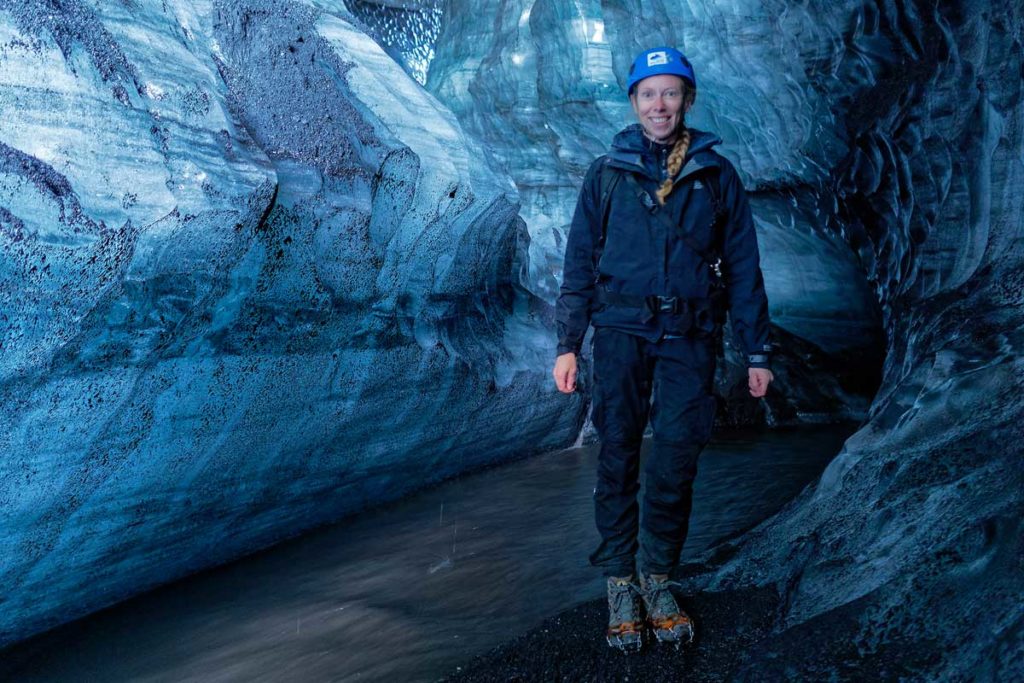
What Equipment do I need to bring for the Katla Ice Cave?
An ice cave is wet. It drips from above and sometimes even small waterfalls come down. So a rain jacket and soft shell or rain trousers are part of the cave outfit. You should also wear something warm underneath and bring a cap and gloves. For a safe step on the ice you will be equipped with light crampons. You can simply put them over your shoes. You should wear sturdy ankle-high hiking boots, which are also as waterproof as possible. In addition to the crampons, each visitor will also be given a helmet.
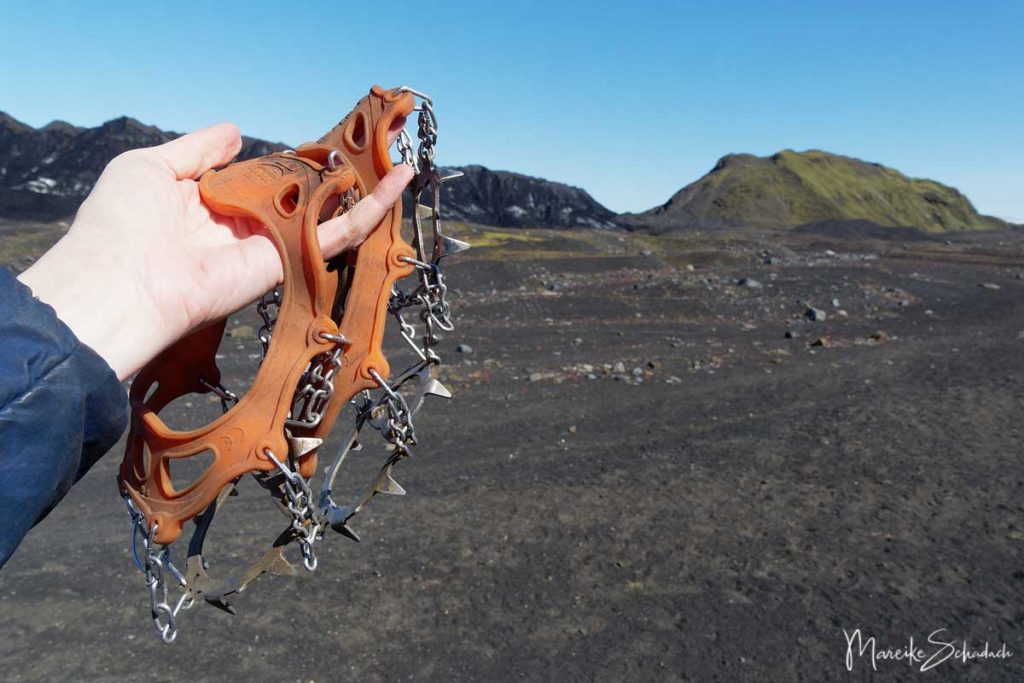
Season for Ice Caves in Iceland and Safety
The season for ice caves is winter. It begins in November as soon as frost provides sufficient stability for the caves and usually ends in March.
The only ice cave that could be visited all year round has always been the Katla ice cave in the south of Iceland. It is located in the Kötlujökull glacier, a part of the Mýrdalsjökull glacier. However, due to the warm temperatures in July 2020 it collapsed after six years. But there are more ice caves at Kötlujökull and so another ice cave was quickly found in July which could be visited. It remains to be seen how the ice caves will develop here now and if the summer tours can still be offered.
Important: since an ice cave can become unstable and collapse, you should never enter an ice cave without an experienced guide.

Book Recommendations for Iceland
Do you want to know where the journey is going? Then I can recommend this travel guides* to you.
You can order the travel guides on Amazon by clicking on the pictures. If you buy a product via an affiliate link, I get a small commission and you help me to keep filling Fernweh-Motive with interesting articles. This does not make the product more expensive for you.
Do you know one of the ice caves at Katla Volcano in Iceland? How did you like it? Do you have any questions or suggestions regarding my article? If so, please write me a comment!
Do you want to know when there are new articles on my blog? Then follow me on Facebook, Pinterest or Instagram. I would also be very happy if you share my article with your friends.
Recommendations for further Reading
Do you love the Scandinavian countries as much as I do? Then you might also be interested in my articles about the Kayak Tour in the Swedish Archipelago or a Trekking Tour to the Greenlandic Ice Sheet.
